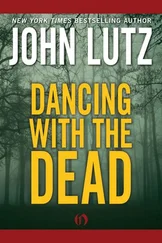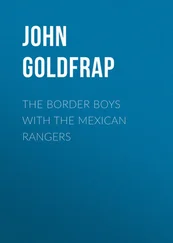John Wohlstetter - Sleepwalking with the Bomb
Здесь есть возможность читать онлайн «John Wohlstetter - Sleepwalking with the Bomb» весь текст электронной книги совершенно бесплатно (целиком полную версию без сокращений). В некоторых случаях можно слушать аудио, скачать через торрент в формате fb2 и присутствует краткое содержание. Город: Seattle, Год выпуска: 2012, ISBN: 2012, Издательство: Discovery Institute Press, Жанр: История, military, Политика, Публицистика, на английском языке. Описание произведения, (предисловие) а так же отзывы посетителей доступны на портале библиотеки ЛибКат.
- Название:Sleepwalking with the Bomb
- Автор:
- Издательство:Discovery Institute Press
- Жанр:
- Год:2012
- Город:Seattle
- ISBN:978-1-93659-906-6
- Рейтинг книги:3 / 5. Голосов: 1
-
Избранное:Добавить в избранное
- Отзывы:
-
Ваша оценка:
- 60
- 1
- 2
- 3
- 4
- 5
Sleepwalking with the Bomb: краткое содержание, описание и аннотация
Предлагаем к чтению аннотацию, описание, краткое содержание или предисловие (зависит от того, что написал сам автор книги «Sleepwalking with the Bomb»). Если вы не нашли необходимую информацию о книге — напишите в комментариях, мы постараемся отыскать её.
RICHARD PERLE, Resident Fellow, American Enterprise Institute and Assistant Secretary of Defense, 1981–1987 Sleepwalking with the Bomb
Sleepwalking with the Bomb — читать онлайн бесплатно полную книгу (весь текст) целиком
Ниже представлен текст книги, разбитый по страницам. Система сохранения места последней прочитанной страницы, позволяет с удобством читать онлайн бесплатно книгу «Sleepwalking with the Bomb», без необходимости каждый раз заново искать на чём Вы остановились. Поставьте закладку, и сможете в любой момент перейти на страницу, на которой закончили чтение.
Интервал:
Закладка:
The latest movement pushing for nuclear zero includes former senior national security officials who served American presidents over the past 40 years. In an article published as this book went to press, Henry Kissinger and Brent Scowcroft set eight criteria for moving to lower levels, in the process rejecting the idea leaked by the Obama administration for a rapid push to a U.S. nuclear arsenal of 300 weapons.
They argue for retaining sufficient, diversified forces; stronger verification; extending force reductions to the growing arsenals of proliferating powers; factoring in missile defense and conventional long-range strategic forces; sustaining alliance guarantees to discourage allies from proliferating; and avoiding the mirror-imaging trap of assuming our enemies share our values, and the perspective on nuclear weapons that our values encompass.
Their viewpoint is a more carefully framed position than that taken by those who wish to rapidly reduce America’s arsenal to 300. But two large problems face those following this gradualist prescription. First, until we know the size of China’s arsenal, and know more about sophisticated nuclear weapons that China and Russia are testing and deploying, we should not entertain further reductions. Second, the cause of rapid disarmament gains momentum from prestigious officials advocating it, and may lead to a stampede of popular opinion. Let a single nuclear weapon detonate anywhere, and the cause will pick up potentially irresistible momentum. Cautionary advocacy of gradual reductions could well fall by the wayside. What is needed is action to bring about positive regime change in hostile states and, if necessary, preventive action to delay nuclear club membership in aspirant hostile states in the interim.
Well-crafted arms agreements can contribute to strategic stability, if arms control is viewed as an essential foreign policy tool rather than an always-paramount goal—an inherently good end in itself. Establishment of hot-line channels of communication, arrangements guarding against accidental war, verifiable arms reductions, notification of maneuvers, and careful information sharing can all enhance security.
Yet we must “trust but verify.” The closer we move to nuclear-free status, the higher confidence we must have in our means of verification. And as verification will never imaginably be ironclad, we will need to hedge against nuclear surprise. This will require newer technologies that can provide superior means of detection, defense against, and disarming of nuclear cheaters. Such technologies must also be fully able to deter conventional and unconventional nonnuclear threats, to provide a full spectrum of national and global security.
A strategy based on past failures will itself fail, and a sufficiently serious failure in nuclear arms policy can destroy Western civilization. Between mythic pasts and fantasy futures lies the perilous present. Fundamentally, nuclear policy must be defensive in orientation: nuclear policy makers should resist reaching for the nuclear-zero stars, and instead concentrate on avoiding the nuclear Armageddon abyss. Unless the West changes policy soon, a Doomsday scenario looks increasingly likely.
The Bulletin of the Atomic Scientists, a publication founded in the dawn of the nuclear age to promote the gospel of arms-control doctrine under the guise of empirical science, in 1947 set its “Doomsday Clock” at seven minutes to midnight. The clock metaphor was chosen by the editors to signal how close they thought the world then was to nuclear extinction.
Periodically the editors set a new time, when they decide that a significant event has altered the world’s nuclear risk level. Twice the clock reached two minutes to midnight—in 1949, upon the first Russian A-bomb test, and in 1953, after the 1952 American H-bomb test. It stood at three minutes to midnight in 1984 when Ronald Reagan allowed the Soviets to walk away from the bargaining table. When the INF Treaty became reality four years later, on Ronald Reagan’s terms, it was moved back to six before the witching hour. The end of the Cold War in 1991 pushed the clock back to 18 minutes to Doomsday—the furthest from Doomsday it has ever been. During President George W. Bush’s second term it was pushed to five minutes to midnight, as the hydra-headed Islamist monster surfaced and struck. On January 14, 2010, following U.S.-Russian arms talks and President Obama’s call for a nuclear-free world, it was moved back to six before. On January 10, 2012, the clock was moved back to five minutes to midnight, due to lack of progress in arms reduction over the past two years.
It is tempting to dismiss the clock as all for show, and indeed those positioning it have conceded that its original time setting was theater to grab public attention. It is certainly not scientific, in any real sense. Rather, it is ideological. Only arms agreements seem to move the clock back, while saber rattling or breakdowns in negotiations seem to nudge it forward. Yet, with proliferation attained by rogues, and Islamist fanatics in search of their jihadist nuclear genie, time is running out. After two-thirds of a century without a nuclear attack, even a single nuclear detonation would tragically alter the course of history, causing catastrophic loss of life and damaging the global economy to the tune of trillions of dollars—a reality even President Obama recognized in his 2009 Prague address. Depending upon what form such a nuclear attack takes, Western civilization would at minimum suffer a devastating blow to societal cohesion; in an absolute worst case it might be extinguished permanently.
It is not too late to act. But we must act decisively and soon, focusing on threats of today, understanding the past as it actually unfolded and the lessons it teaches, and deferring utopian projects for a nuclear-free future and benevolent world government. THE BEDROCK GOAL OF NUCLEAR STRATEGY FOR CIVILIZED NATIONS MUST BE TO AVOID WHAT MIGHT BE CALLED THE “APOCALYPTIC TRINITY” OF STRATEGIC NUCLEAR OPTIONS: MUTUAL SUICIDE, GENOCIDE, OR SURRENDER—in the words of strategist Raymond Aron—submission “to a detestable world order provided it dispels the agonies of individual insecurity and collective suicide.” This goal makes up the Twelfth—and most fundamental—Lesson of nuclear-age history.
We must take preventive action to foster regime change in nations whose acquisition of nuclear weapons creates grave risk of nuclear catastrophe. As a last resort, if other means fail, a preventive military option must be preserved. Failure to take necessary active measures to defend against nuclear-armed missiles and passive measures to harden societal infrastructure essential to life and health greatly increases the payoff for surprise attacks. Such lapses simply increase chances that attacks will be carried out and succeed.
“I know not with what weapons World War III will be fought,” Albert Einstein said, “but World War IV will be fought with sticks and stones.” To have the best chance to avoid nuclear catastrophe, we should absorb the right lessons from the two-thirds of a century we call the nuclear age. We should keep in mind Dean Rusk’s tart quip that “only one-third of the world is asleep at any given time and the other two-thirds is up to something.”
President Obama’s utopian rush towards nuclear abolition ignores the vital lessons nuclear-age history teaches. His abject failure to support the Iranian uprising of June 2009 by leading an allied coalition to impose strong sanctions then, instead of pursuing talks that had no plausible chance to succeed, exemplifies why we are sleepwalking towards an avoidable nuclear catastrophe. Equally risky is his desire to “set an example” for other nations to follow in reducing nuclear arms, when our adversaries are more likely to increase their arsenals instead, in pursuit of greater power and influence.
Читать дальшеИнтервал:
Закладка:
Похожие книги на «Sleepwalking with the Bomb»
Представляем Вашему вниманию похожие книги на «Sleepwalking with the Bomb» списком для выбора. Мы отобрали схожую по названию и смыслу литературу в надежде предоставить читателям больше вариантов отыскать новые, интересные, ещё непрочитанные произведения.
Обсуждение, отзывы о книге «Sleepwalking with the Bomb» и просто собственные мнения читателей. Оставьте ваши комментарии, напишите, что Вы думаете о произведении, его смысле или главных героях. Укажите что конкретно понравилось, а что нет, и почему Вы так считаете.












